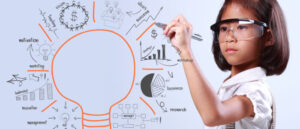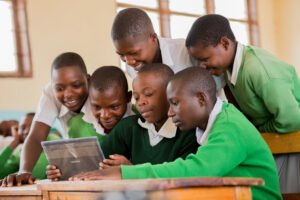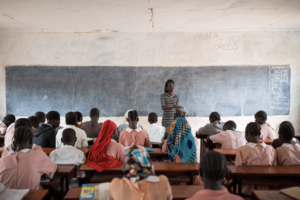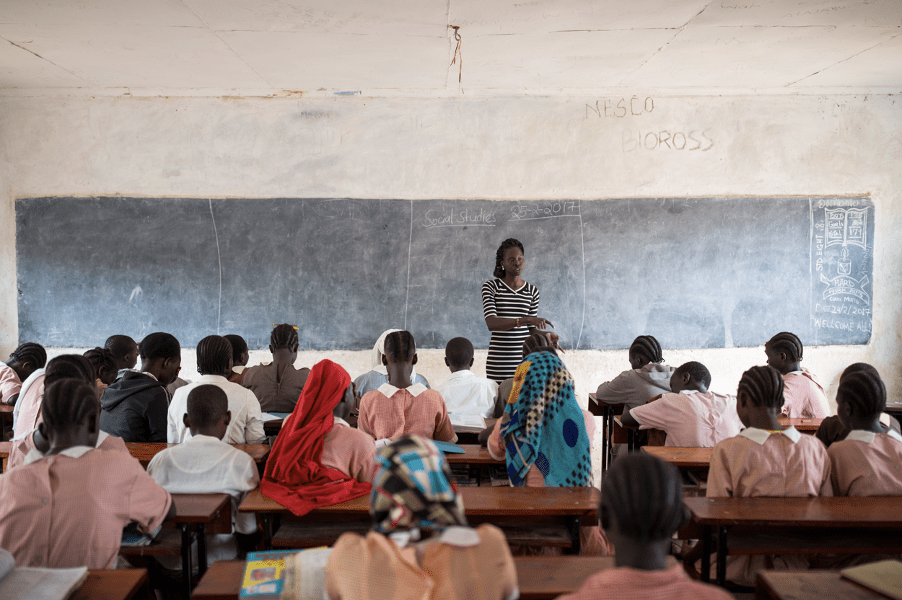Assessment and Evaluation in Global Education play an increasingly important role in the ever-changing educational environment. Understanding and improving the processes by which we measure and analyze learning globally is critical as our globe grows more interconnected. This comprehensive investigation explores the methods used to measure the influence and efficacy of education in various cultural and geographic contexts. Assessment and Evaluation in Global Education capture the complex opportunities and problems that come with educating people for a globalized society.
It is a prism through which we examine the effectiveness of teaching methods while taking into account the various requirements and viewpoints of students all around the world. This investigation adopts a holistic approach that recognizes the international nature of modern education and goes beyond traditional measurements. Come along with us as we explore the complexities of Assessment and Evaluation in Global Education, a field where learning takes place beyond national boundaries and is reflected in the fabric of global learning environments.

The Importance of Assessment and Evaluation in Global Education: Unlocking Educational Effectiveness
Assessment and Evaluation in Global Education plays a vital role in the constantly changing field of education, directing the development of global learning approaches. The relevance of these processes is thoroughly examined in this article, which also highlights the potential and problems they bring in an increasingly globalized world.
Assessment and Evaluation in Global Education: A Brief Introduction
Assessment and Evaluation in Global Education, at its heart, refer to a set of procedures used to evaluate the efficacy of educational methods all over the world. These procedures provide educators and institutions with diagnostic tools in addition to evaluating the performance of individual students. Teachers can improve teaching methods, customize curricula, and improve the quality of education by methodically assessing results.
Handling Cultural Variations: How Diversity Affects Assessment Techniques
Numerous cultural strands are interwoven into the rich fabric of global education, each impacting the methodology of instruction and evaluation. Assessment techniques are greatly impacted by cultural differences, therefore educators must use a nuanced and culturally aware approach. It is critical to recognize linguistic variances, cultural norms, and unique learning methods when creating exams that fairly represent students’ abilities from a range of backgrounds.
Finding a Balance between National Evaluation Systems and Standardized Global Tools
The question of whether countries preserve their own evaluation systems or if there are standardized worldwide assessment instruments emerges in the pursuit of global educational benchmarks. In actuality, national autonomy and standardized tools must be carefully balanced. Many nations still use their own evaluation methods, despite the fact that programs like TIMSS and PISA offer comparison frameworks. This is because local priorities and educational quirks must be taken into consideration.

How to Ensure Equity and Inclusivity in a Globalized Learning Environment
The challenge for educators is to ensure equity and inclusivity in Assessment and Evaluation in Global Education as classrooms increasingly resemble microcosms of the globe. Important tactics include implementing inclusive assessment techniques, recognizing language and cultural diversity, and creating a learning environment that is sensitive to cultural differences. In order to ensure that all students have a fair and enjoyable assessment experience, educators must acknowledge and accommodate the varied backgrounds of their students.
Taking a Stand on the Digital Frontier: How Technology Can Help Modernize Assessment Procedures
A new age in Assessment and Evaluation in Global Education has begun with the development of technology. Technology is essential to upgrading assessment procedures, from adaptive learning platforms to online tests. Collaborative assessment environments, individualized learning plans, and real-time feedback are changing the game and getting students ready for the digital demands of the global workforce.
Read also: Education for Sustainable Development (ESD)
Transitioning from Policy to Practice: Resolving International Issues with Assessment Standards
Currently leading the global education conversation are policymakers who are attempting to harmonize assessment standards. This entails aiming for a common foundation while negotiating the intricacies of many educational systems. Policymakers prioritize cross-border cooperation, cultural sensitivity, and sharing of best practices in order to establish a framework for global assessments that is both standardized and adaptable.
Beyond the Classroom: The Continual Development of Assessment and Evaluation
Beyond the walls of the classroom, Assessment and Evaluation in Global Education. They mold the abilities and know-how that people bring on the international stage. The ability to analyze and evaluate learning globally becomes not only necessary for education but also for society as a whole as the world grows increasingly interconnected. The dedication to enabling people to flourish in the intricately interwoven world they will traverse is reflected in the processes’ continuous progress.
Opportunities and Challenges: Assessment and Evaluation in Global Education’s Future
There are obstacles to overcome even if Assessment and Evaluation in Global Education provide a road map for bettering education. Ongoing issues include eliminating cultural biases, guaranteeing fair access to evaluation technology, and striking the correct balance between local autonomy and global benchmarks. But these difficulties also present chances for creativity, teamwork, and ongoing improvement of teaching methods worldwide.
Developing Worldwide Competencies via Evaluation and Assessment
It is impossible to overestimate the importance of Assessment and Evaluation in Global Education. These procedures serve as the cornerstone of good education, directing organizations, teachers, and legislators toward excellence. Developing global competences necessitates an all-encompassing strategy that takes into account cultural diversity, welcomes technology innovations, and negotiates the challenges of harmonizing assessment standards. The dedication to improving Assessment and Evaluation procedures is crucial to influencing global education in the future as we negotiate the complex terrain of global education.
Read Also: Impact of International Education on Economic Development
How Important Are Assessment and Evaluation in Global Education?
As the compass directing educational systems toward ongoing improvement, Assessment and Evaluation in Global Education are crucial elements. Their insights into the efficacy of teaching approaches, curriculum design, and the overall learning experience are vital for educators, policymakers, and stakeholders. Through the methodical assessment and evaluation of educational outcomes on a global level, schools can pinpoint their areas of strength, rectify their deficiencies, and customize their approaches to suit the varied requirements of learners across the globe.
The importance of Assessment and Evaluation in Global Education also goes beyond the performance of individual students; it includes the more general goals of fostering cross-cultural understanding, promoting global competencies, and equipping people to thrive in a globally interconnected world. Essentially, assessment and evaluation processes serve as diagnostic tools for teachers and organizations, propelling the development of educational paradigms to satisfy the demands of an increasingly globalized society.
What effects do cultural variations have on evaluation techniques in an international school setting?
In the field of Assessment and Evaluation in Global Education, cultural variations have a significant impact on assessment techniques. Cultural quirks affect how students view and react to evaluation instruments in addition to how they approach learning. Assessments used in education that do not take cultural diversity into consideration may unintentionally induce prejudice and make it more difficult to accurately reflect a student’s genuine ability.
Teachers need to use evaluation methods that are sensitive to cultural differences in a global educational environment. This entails understanding and adjusting for linguistic variances, cultural norms, and a variety of learning methods. A written exam, for instance, might be a common evaluation method in one culture but might not be able to adequately measure pupils from oral-based cultures’ knowledge and abilities. Consequently, adopting an assessment strategy that is culturally sensitive guarantees that the evaluation procedure takes into account the diverse backgrounds and experiences of students in an international learning environment.
Do nations have their own assessment systems, or are there global assessment tools that are standardized?
The problem faced by Assessment and Evaluation in worldwide Education is striking a balance between the need for worldwide uniformity and the acknowledgement of various educational systems. The truth is that many nations continue to use their own assessment systems, despite increased efforts to create uniform worldwide assessment instruments. Different evaluation procedures have been developed as a result of the diversity of educational aims, cultural contexts, and societal needs.
The goal of organizations like Trends in International Mathematics and Science Study (TIMSS) and the Programme for International Student Assessment (PISA) is to offer a comparative framework for evaluating student performance internationally. Nonetheless, national examinations that take into account the specifics of the local curriculum and educational aims frequently complement these tests.
The cohabitation of national assessment systems and standardized worldwide tools illustrates the delicate balance that must be struck between promoting global benchmarks and allowing each nation the freedom to customize exams to fit its own particular educational environment.

How can teachers make sure that tests are inclusive and fair to a variety of international student populations?
A teacher’s first priority should be to guarantee equity and inclusivity in Assessment and Evaluation in Global Education. In order to accomplish this, educators must create and administer assessments in a proactive, culturally sensitive manner. This entails taking into account the diversity of student populations, detecting linguistic variances, and taking into account different learning styles.
Using inclusive assessment techniques that let students show their learning in a variety of ways is one tactic. This can involve giving students options that fit with their preferences and strengths, such as project-based examinations, oral presentations, or group tasks. Teachers should also be aware of any potential cultural biases in assessment materials and make sure that examples, scenarios, and questions are inclusive or culturally neutral.
Positive assessment experiences are further enhanced by cultivating a culturally inclusive learning atmosphere where students feel appreciated and respected. By putting training programs into place, educators can become more culturally competent, which will help them deal with the complexities of a wide range of student backgrounds and advance assessment fairness.
What part does technology play in the modernization of international education’s assessment and evaluation procedures?
Modernizing Assessment and Evaluation in Global Education is aided by technology. Traditional evaluation techniques have been transformed by the use of digital tools, which present new opportunities for effectiveness, precision, and customisation. A more dynamic and flexible evaluation process is facilitated by data analytics, adaptive learning platforms, and online examinations.
Cutting-edge assessment tools can give teachers immediate feedback so they can modify their lesson plans in response to both individual and group student performance. Artificial intelligence-powered adaptive tests can adjust questions based on students’ skill levels, providing a more realistic picture of their knowledge and abilities.
Technology also makes it easier to create collaborative assessment environments, which allows students from all over the world to work together on projects and assessments. This not only helps students collaborate across cultural boundaries, but it also gets them ready for the digital needs of the global workforce.
However, access and equity concerns must be carefully taken into account when integrating technology into evaluation procedures. To close the digital divide and guarantee that every student, regardless of location or socioeconomic background, has fair access to contemporary assessment tools, policymakers and educators must collaborate.

Read also: Education for Sustainable Development (ESD)
How do decision-makers handle the difficulties of international harmonization of assessment standards?
Within the field of Assessment and Evaluation in Global Education, harmonizing assessment standards globally is a challenging undertaking that calls for cooperation between international organizations, educators, and policymakers. The necessity for a common framework that respects national autonomy and enables meaningful comparisons across varied educational systems is acknowledged by policymakers.
Creating international agreements and alliances to create shared benchmarks is one strategy. Global educational standards are the subject of much discussion and agreement, thanks in large part to organizations like the Organization for Economic Co-operation and Development (OECD) and the United Nations Educational, Scientific, and Cultural Organization (UNESCO).
In addition, policymakers stress how crucial cultural sensitivity is to the creation of international evaluation standards. Aware that a one-size-fits-all strategy might not be appropriate, efforts are focused on developing frameworks that support inclusive evaluation procedures and take cultural diversity into account.
In order to promote a process of reciprocal learning, governments also endeavor to facilitate the exchange of best practices among states. Policymakers seek to solve the difficulties of harmonizing assessment standards while honoring the distinctive characteristics of every educational system by promoting a culture of shared knowledge and cooperation.
The future of learning on a global scale is shaped by Assessment and Evaluation in Global Education, which are crucial elements. The conversation about improving international education practices is enriched by acknowledging the importance of these processes, comprehending the influence of cultural differences, navigating the existence of standardized tools versus national systems, assuring justice and inclusivity, utilizing technology, and tackling harmonization’s challenges.
The development of Assessment and Evaluation in Global Education will be essential in equipping people to prosper in our diverse and interconnected world as educators, policymakers, and stakeholders continue to work together.
Trust you found our article on Assessment and Evaluation in Global Education helpful. Follow our website for more interesting articles.
